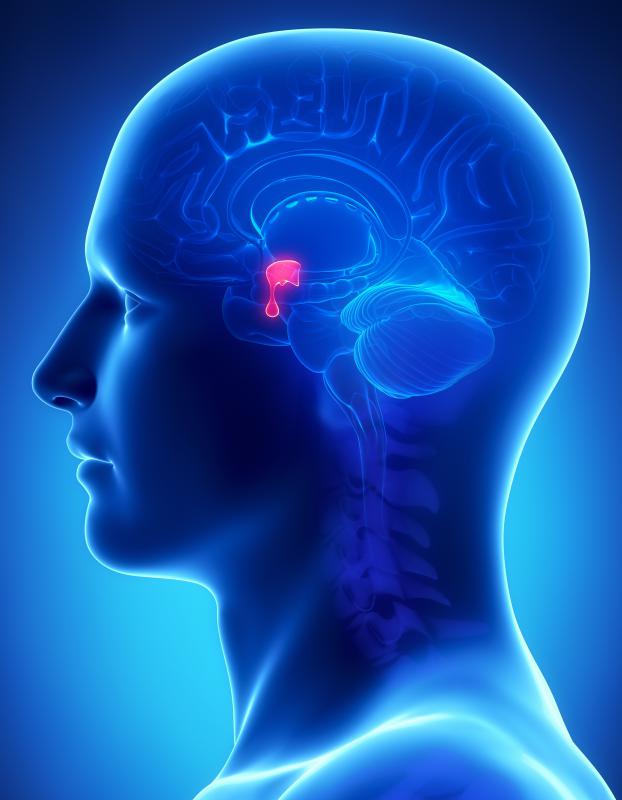At TheHealthBoard, we're committed to delivering accurate, trustworthy information. Our expert-authored content is rigorously fact-checked and sourced from credible authorities. Discover how we uphold the highest standards in providing you with reliable knowledge.
What Is the Difference between Gigantism and Acromegaly?
Gigantism and acromegaly are both disorders linked to an overactive action of insulin-like growth factor, or IGF-1. Gigantism occurs when abnormally high growth occurs during childhood, when the epiphyseal growth plates are open, whereas acromegaly is due to the same action occurring in adulthood when the growth plate cartilage has fused. An abnormality in the pituitary gland results in an over secretion of growth hormone which, in adults, leads to an enlargement of bones, and in children also leads to excessive height.
The incidence of either disorder is quite rare, with gigantism occurring even more rarely than acromegaly. An excessive amount of growth hormone, or GH, is released by the pituitary gland which results in an alteration of the way the body processes and uses nutrients. The epiphyseal or bony growth plates are still open in childhood which means the chemical changes of acromegaly result in an abnormal growth of long bones. Both gigantism and acromegaly are most commonly caused by pituitary adenoma, a noncancerous tumor within the pituitary.

Acromegaly causes the growth of hands and feet which can become thick and soft. Facial features like the jaw line, forehead and nose grow and coarsen. Inside the mouth, the tongue becomes larger and the teeth have more space in the jaw so they become widely spaced.
In children and teenagers, the further symptom of the lengthening and enlargement of the bones becomes obvious. Other symptoms of gigantism and acromegaly include oily skin, sweating, high blood pressure and coarser body hair. Headaches, arthritis and muscle weakness are some of the side effects shared by sufferers of the condition.

The most common age of onset of gigantism is puberty but there have been cases where younger children have been affected. Normally, the pituitary gland releases GH after receiving direction from the hypothalamus, which produces growth hormone-releasing hormone, or GHRH. The hypothalamus also gives the pituitary a signal to stop producing GH but in cases of acromegaly, this direction is ignored. As a result, the liver produces too much IGF-1 and bones, organs and soft tissue enlarge and the processing of nutrients such as fats and sugars is impacted.

One of the differences between gigantism and acromegaly is the speed at which the effects become obvious. The changes in acromegaly are quite slow and the changing and coarsening of the facial features may only be noticed by someone not familiar to the person who is affected, such as a new medical practitioner trained to observe or notice such things. Gigantism, on the other hand, manifests itself more dramatically with great change over a short time.

The sooner a diagnosis of gigantism and acromegaly is made, the more immediate a treatment can begin and more serious symptoms avoided. Treatment usually involves the removal of a part or entire pituitary adenoma, should this be the cause. Additional medication is also necessary in the form of drugs. Acromegaly can be successfully managed but it is a lifelong condition.
AS FEATURED ON:
AS FEATURED ON:
















Discuss this Article
Post your comments